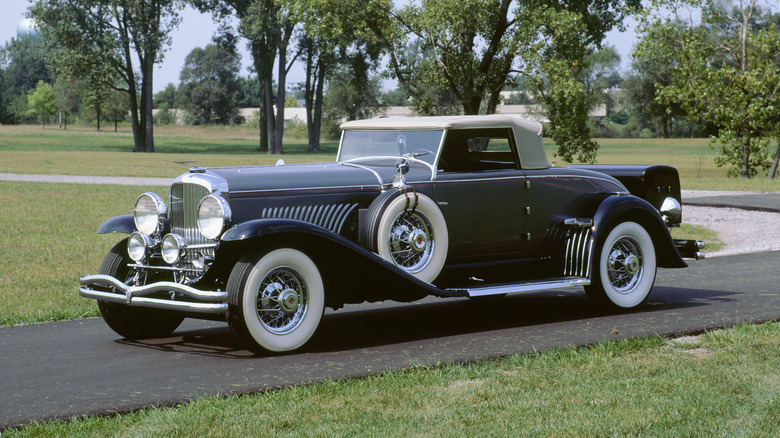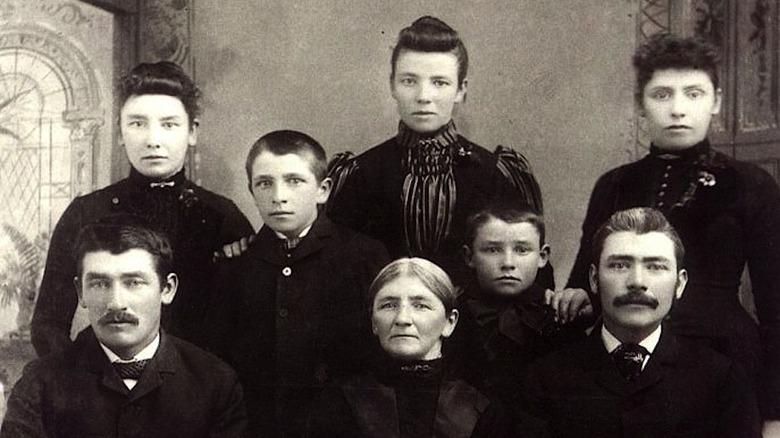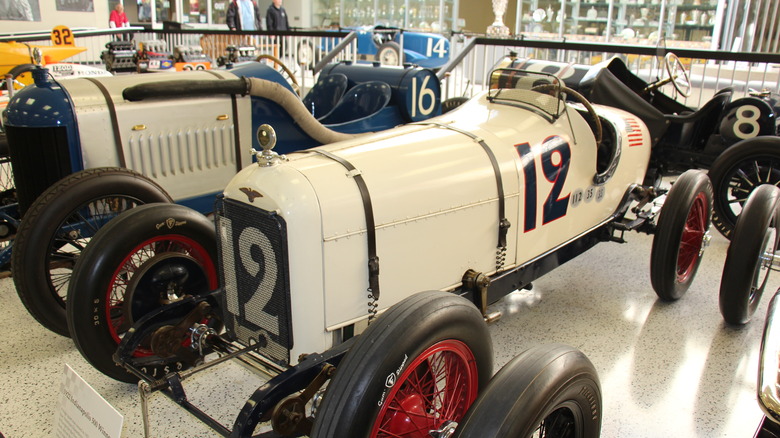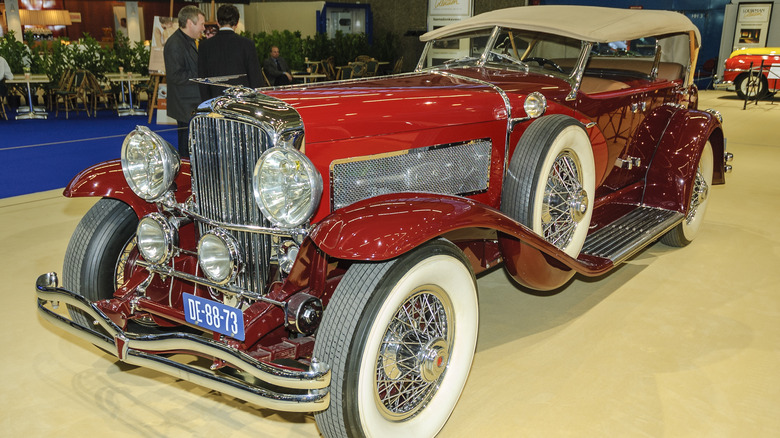What Happened To Duesenberg Motors Company?
The historical record of automobile manufacturers has a large appendix of entries marking companies that have long since faded into oblivion. During its 100-plus years in business, General Motors has axed once-popular brands like Pontiac and Oldsmobile, along with lesser regarded nameplates like Saturn and Hummer. Chrysler has played grim reaper as well, dumping Plymouth in 2000 and sending DeSoto to the crusher in 1960. Pontiac, Oldsmobile, and Plymouth all enjoyed tremendous success on the racetrack in their heyday, but that wasn't enough to keep those brands alive.
Duesenberg's cars also dominated racing circuits around the world a century ago and were the epitome of luxury on city streets, but the brand no longer exists to compete with the world's top automakers as it did in the years leading up to the Great Depression. This is the story of the company that made some of the era's most strikingly beautiful and powerful cars, and why the Duesenberg badge never made it to the 21st Century.
Duesenberg was founded by two brothers
Duesenberg has roots in Germany, although the company wasn't formed until brothers Fred and Augie (front left and front right in the photo above from 1886) immigrated to the United States in 1885 and settled in Iowa. Fred built and raced bicycles, and by the turn of the century, Augie had joined him in the business of building and selling motorcycles. The budding auto industry that was at the time dominated by the revolutionary Ford Model T intrigued the Duesenbergs, so they partnered with Des Moines attorney Edward Mason to form the Mason Motor Company. According to Riga Master, Mason built about 1,500 cars between 1906 and 1917 before the company went bankrupt. At that point, Fred and Augie moved to Minnesota and founded the company that bore their surname with the intention of building automobile engines and race cars.
They built a factory in Newark, NJ, after World War I, but moved their operations to Indianapolis in 1920. The debut Duesenberg was the 1921 Model A, which was powered by the nation's first mass-produced eight-cylinder engine. It had a displacement of 4.3 liters and a power output of 88 hp (via Carfolio).
[Featured Image via Wikimedia Commons| Cropped and scaled| Public Domain]
Duesenbergs won multiple Indy 500 titles
Duesenbergs were a force to be reckoned with on some of the world's most famous racetracks. Jimmy Murphy drove the car pictured above to victories at the 1921 French Grand Prix and 1922 Indy 500, and Duesenbergs also won at Indy in 1924, 1925, and 1927. For the general public, Duesenberg concentrated on building luxurious and beautiful road-going machines like the Model X and Model J, some of which were owned by notable figures like Al Capone, Howard Hughes, Greta Garbo, and Clark Gable. Each of the early Duesenbergs was made in very limited numbers; according to Silodrome, the 1921-26 Model A had the largest production run at 650 units, while 481 model Js were made between 1928 and 1937.
The Model X is the rarest of these early "Doozies" with an original run of only 13 cars, just five of which are believed to still exist. Duesenbergs features like automatic transmissions and power brakes were ahead of their time, and their price tags reflected the cars' technological advancements and stunning styling. The 1929 Model J started at $8,500, which would be approximately $150,000 today.
[Featured Image by Sicnag via Wikimedia Commons| Cropped and scaled| CC-By 2.0]
Fred Duesenberg died in 1932
In 1926, the Duesenberg brothers partnered with auto industry magnate Errett Loban Cord, who embraced the brand's niche at the top of the luxury car market. Six years later, Fred died of a heart attack after developing pneumonia following a crash in Pennsylvania. Augie and Errett Cord carried on until 1937, but flagging sales forced them to shut the company down that year.
Augie, who had always been the more racing-focused of the two brothers, continued developing fast cars and helped build the "Mormon Meteor" that set a new land speed record at the Bonneville Salt Flats in 1935. Augie retired after World War II and died of a heart attack in 1955 at age 75. The extreme rarity of the original models can drive the price of surviving examples past $1 million, but the line didn't die with Fred and Augie.
In the 1970s, restoration expert Richard Braund developed the Duesenberg II, a line of hand-crafted cars fashioned after the original models but with modern upgrades like power steering, air conditioning, and cruise control. Some of these recreations are almost as highly valued as the originals; one sold in 1981 for $500,000.



